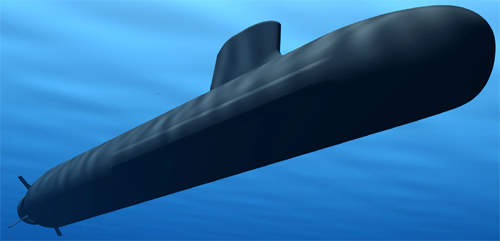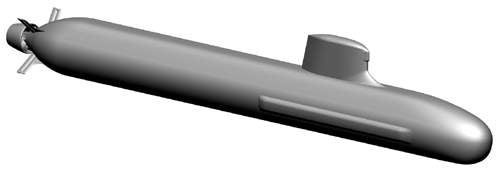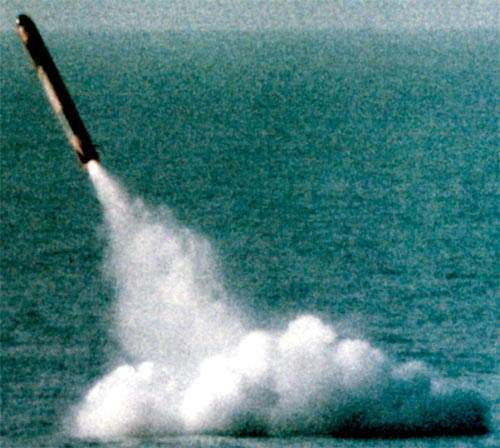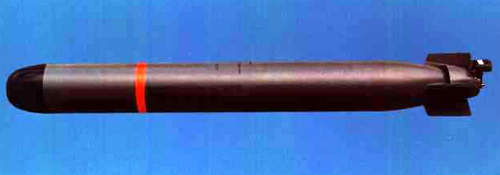Six Barracuda nuclear-powered attack submarines are to be built for the French Navy. The Barracuda Class is being introduced to replace the existing force of the four SSN Rubis submarines which entered service from 1983 to 1988 and the two SSN Amethyste Class submarines which entered service in 1992 and 1993.
The Barracuda missions include anti-surface and fast deep anti-submarine warfare, land attack using stealthy long-range cruise missiles, surveillance and intelligence gathering, crisis management and special operations.
The Barracuda submarine is a key element in the FOST (Force Océanique Stratégique) Navy Command of the French Strategic Nuclear Forces and the Marine Nationale 2015 Navy Model which defines the naval force requirements for 2015.
Barracuda attack submarine programme
In 1998 the French Ministry of Defence put in place the Barracuda integrated project team (BIPT) with team members Délégation Générale pour l’Armament (DGA); DCN, with responsibility as the platform design authority and ship building prime contractor; Technicatome, which has responsibility for the nuclear power system; and the Commissariat à l’Énergie Atomique (CEA), the French nuclear regulatory authority.
The feasibility study for the Barracuda Class was successfully completed in 2002 and the programme entered the design definition phase in late 2002.
The French Defence Procurement Agency (DGA) awarded DCN and Areva TA (prime contractor for the nuclear powerplant) the contract for the design, development and production of the first of class vessel, with options on the remaining five, in December 2006. The first submarine is scheduled to enter service in 2017 with the remainder at two yearly intervals to 2027.
The first-of-class submarine will be called Suffren. The other hulls will be Duguay-Trouin, Dupetit-Thouars, Duquesne, Tourville and De Grasse. First steel for Suffren was cut in December 2007 at DCNS Cherbourg.
Barracuda nuclear submarine design
The Barracuda will have a displacement of about 4,100t surfaced, which is an increase of 70% compared to the Amethyste Class submarines. The maximum speed will be 25kt and the diving depth more than 350m.
The high level of automation integrated into the submarine’s operational and mission systems will allow the submarine a complement of 60 (in two crews) compared to 78 in the Rubis and Amethyst Classes. The operational cost will be reduced by 30% compared to that of the Rubis Class.
The Barracuda incorporates a range of diving, safety and damage control technologies and an integrated platform management system (IPMS). Many of the technologies developed by DCN for the Le Triomphant Class and by Izar and DCN for the Agosta and Scorpene Classes are being integrated into the design of the Barracuda.
The ship design incorporates a range of stealth technologies to minimise the acoustic, magnetic, radar and visual signatures. The Barracuda provides a high silent running speed and manoeuvrability for the anti-submarine role.
EADS Astrium is supplying the life support system for the submarine, which will be based on the carbon dioxide regenerative technology Astrium has developed for human spaceflight.
Command and control
The SYCOBS (système de combat pour Barracuda et SSBN) the battle management system is being developed by DCN and Thales.
SYCOBS will also be fitted on the final SSBN submarine, Le Terrible, being built for the French Navy.
The combat system integrates active and passive sensors, electronic, optronic and optical sensors and data processing, signal processing of downloaded external tactical data, the launch and control of torpedoes, missiles and countermeasures, external communications and navigation. The communications suite includes satellite and extra-long-frequency acoustic links.
Sagem Défense Sécurité has been contracted to supply the DAS surface detection system which comprises one radar mast and two optronic masts and integrates a passive electromagnetic detection sensor.
Torpedoes
The submarine has four 533mm torpedo tubes with water ram weapon discharge and accommodates 18 torpedo and missiles in a mixed load.
The submarine will carry new heavyweight torpedoes. The Barracuda will be capable of deploying the Black Shark torpedo developed by DCN and WASS (Whitehead Alenia Sistemi Subaquei). Black Shark is a dual-purpose, wire-guided torpedo which is fitted with Astra active / passive acoustic head and a multi-target guidance and control unit incorporating a counter-countermeasures system.
Missiles
The Barracuda’s anti-surface missile is an upgraded version of the SM39 Exocet missile which is launched from the torpedo tube. The Exocet, armed with a 165kg warhead, uses inertial cruise guidance and active radar homing in the terminal phase of flight. The missile travels at high subsonic speed, Mach 0.9, to a target range of 50km.
The new naval land-attack cruise missile, Naval Scalp, developed by MBDA, can be fired from Nato-standard 533mm torpedo tubes. Naval Scalp will enter service in 2012. The missile is derived from the Scalp EG and Storm Shadow air-launched missile.
The missile has long-range precision attack capability against targets at ranges up to 1,000km. Scalp has inertial guidance which is continuously updated in flight with digital terrain matching and GPS (global positioning system). An imaging infrared seeker and automatic target recognition provide terminal guidance.
The Scalp Naval version has a longer body than the air-launch version and the wings are extended from within the missile body after launch rather than being externally mounted. The missile is being developed for both submarine torpedo-tube ejection and surface ship vertical launch.
Unmanned underwater vehicles
The Barracuda will be configured to enable a future back-fitting of unmanned underwater vehicles (UUVs), although there are no current operational requirements for the installation of a UUV.
Sonar
Thales Underwater Systems has been selected as prime contractor for the sonar suite. The submarine is fitted with bow sonar wide-aperture flank sonar and towed sonar arrays.
Thales Underwater Systems has placed a contract on the Centre for Submarine Technology, a division of the UK MoD QinetiQ organisation, to carry out a feasibility study on the deployment of reelable thin line towed sonar arrays for the Barracuda class.
Barracuda nuclear propulsion system
The nuclear propulsion system is a new hybrid design providing electric propulsion for economical cruise speeds and turbo-mechanical propulsion for higher speeds. The power plant will be based on technologies developed for the 150MW K15 pressure water reactor installed in the Triomphant Class submarine and the Charles de Gaulle aircraft carrier.
Thermodyn of Le Creusot has been selected to provide the two turbo-generators and one propulsion turbine for each vessel.









